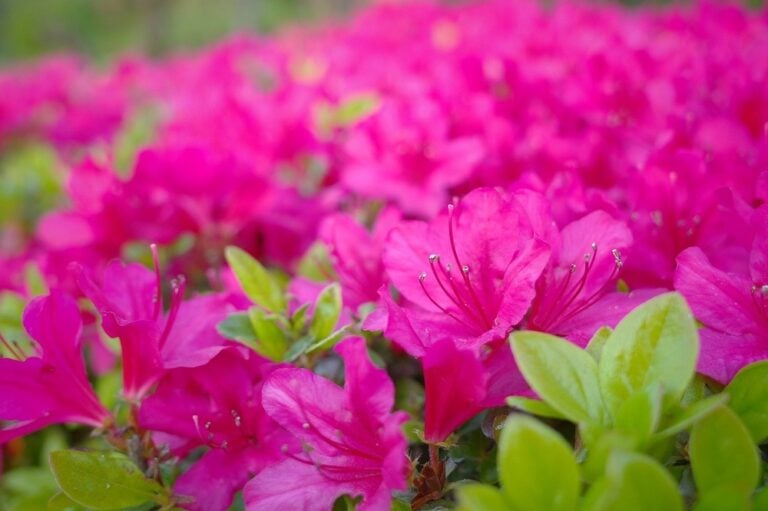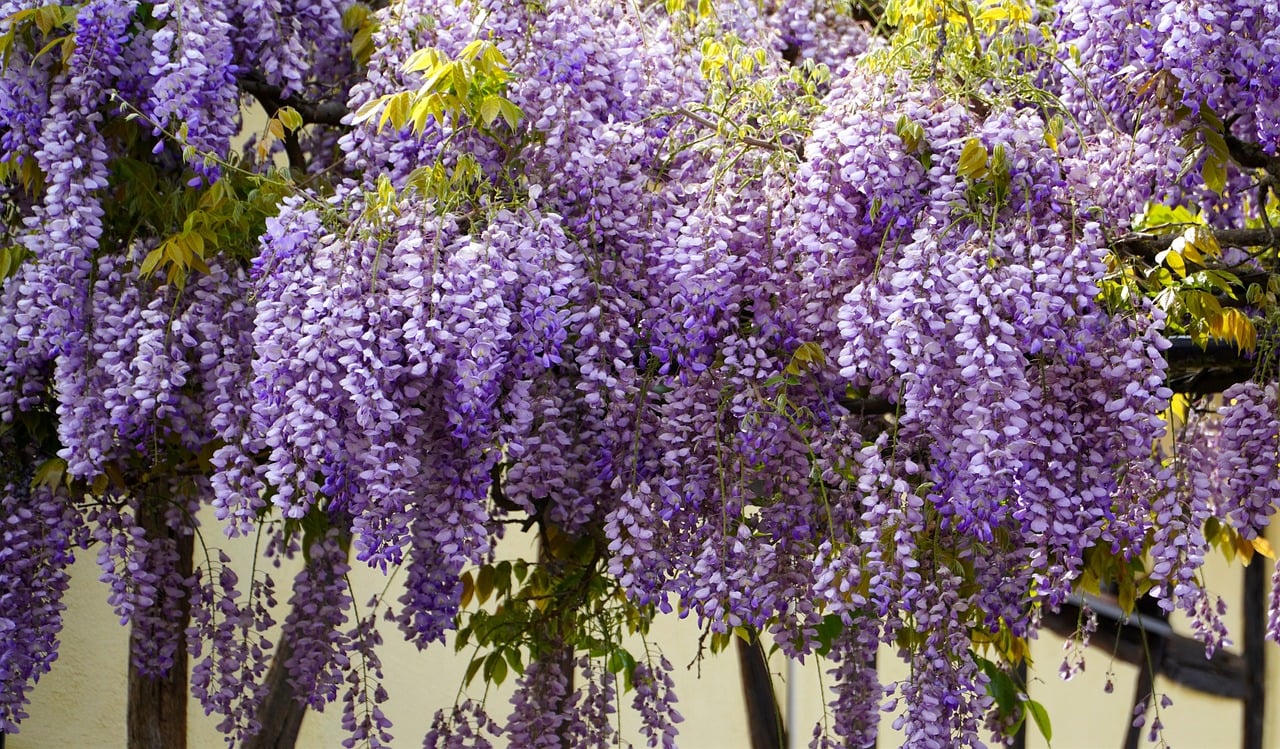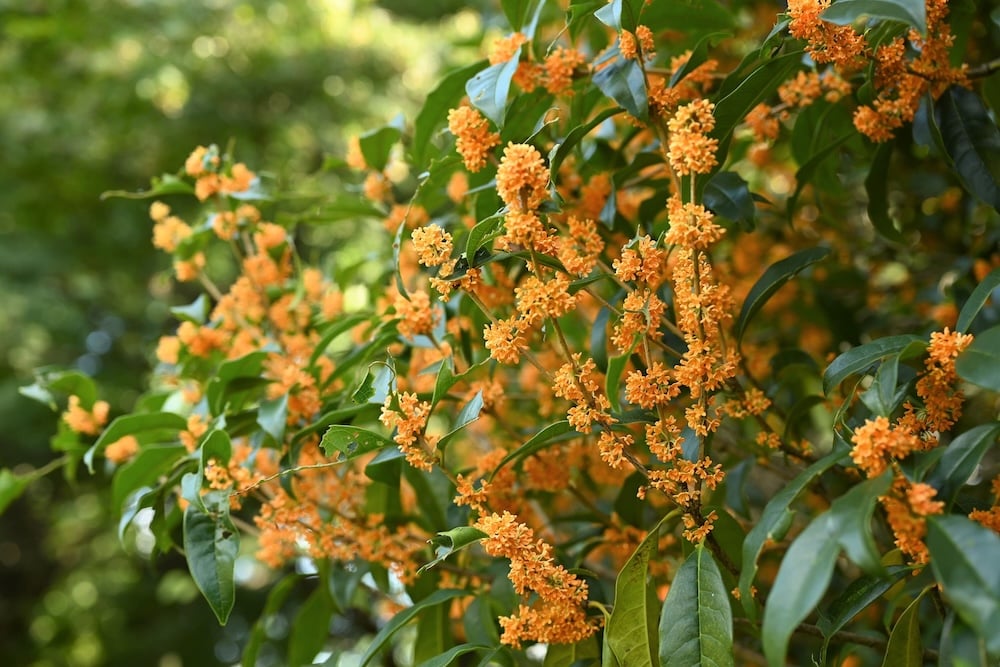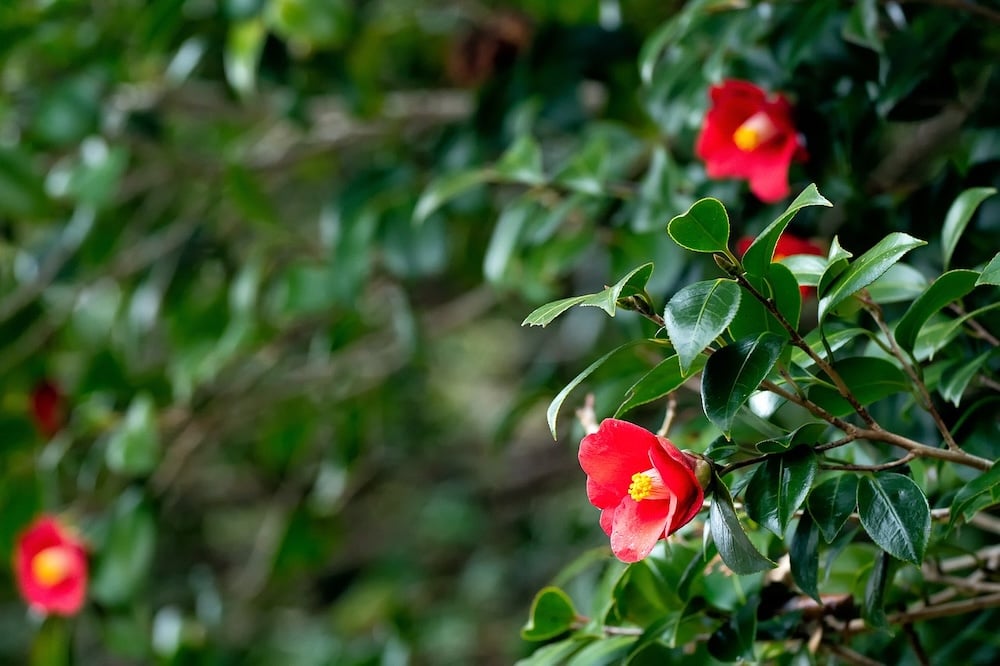
Before moving to Japan, I was never the type to admire flowers. Sure, I never denied that they were a beautiful and lovely addition to a garden, but I never gave them the appreciation I gained after living in Kyūshū. Part of this appreciation, I believe, comes from the seasonality ingrained into the Japanese way of life.
From beauty products to Kit Kat flavors, much of Japanese consumerism is based on when an item is at its freshest or the season to which it is most well-suited. Likewise, flowers are treated as each season’s unique gift to us. The same park you visited in February could be awash with a completely new color palette in July, as the flowers that grow each month are different.
As such, the appearance of flowers like the cute and fragrant kinmokusei (金木犀), the fluffy pastel ajisai (あじさい), or gorgeously delicate tsutsuji (つつじ) all came to signify a changing of the seasons that made the transition much more enjoyable than ever before.
Commit some of these flowers to memory and look out for them as they pop up around you throughout the year.
Spring
Fuji 藤 (Wisteria)

This elegant species of flower is immensely popular across Japan, and their characteristic droop and purple petals are hard to miss. You’ll find them especially abundant draped across overhead trellises in parks and entrances to buildings. This flower’s popularity is with good reason: it features in many poems, music, hymns, and art throughout Japanese history, as it is considered a lucky flower which symbolizes longevity. Wisteria bark was even used to make the oldest textile in Japan called Fuji-fu (藤布), which was then turned into clothing.
Sakura 桜(Cherry Blossoms)
A Japanese flower article would be incomplete without at least a short mention of this iconic flower. Beloved both within Japan and abroad, you can imagine the crowds that gather to soak in the beauty at parks across Japan in the springtime when they are in full bloom. Exact timings differ across Japan, given the country’s uniquely long geography and climate differences year-to-year. Furthermore, sakura only last about a week at a time, so catching a day with them has proven difficult for many foreigners coming to visit on a predetermined schedule. In general, however, sakura bloom between mid-January to early May, with the earliest start in Okinawa and your last chance to see them in Hokkaido.
If serendipity favors you on your trip to Japan, however, grab some drinks and snacks at a convenience store before heading to one of the many parks across Japan that transform into fluffy pink clouds during sakura season. If you’re feeling particularly fancy, stop by a 100-yen shop and pick up a burū shīto (ブルーシート) to sit on.
Fall
Kinmokusei 金木犀 (Sweet/Fragrant Olive)

A favorite bloom of mine is the fragrant olive or, in Japanese (which I prefer): kinmokusei (金木犀). This is a flower which blooms in small bunches, as the individual flowers themselves are quite small. But don’t let their size fool you—they are pungent! I’ve met both people who love the smell of kinmokusei and those who find it too overpowering. Personally, it serves as a wonderful indicator that summer is coming to a close and autumn is around the corner.
コスモス (Cosmos)
Native to Mexico, cosmos flowers were first brought to Japan in the late 19th century. They have since proliferated and grown to be seen as the sakura of fall. Fields of cosmos paint the Japanese countryside a vivid shade of pink with speckles of white throughout (although there is also a lovely yellow variety of cosmos as well).
There are many cosmos fields all over Japan. If you find yourself in the Tokyo area, Showa Kinen Park (昭和記念公園) is easy enough to get to, albeit a bit further out in the outskirts of the city.
If two of your interests include beautiful flowers and beer, then head to the Kirin beer factory in Fukuoka. Next door, you’ll find an expansive field of these beautiful blooms, making it easy to have a drink or two (or three or four) after touring the factory, before heading over to admire the flowers.
Summer
Ajisai あじさい (Hydrangea) Bloom between May and July
Summertime in Japan can be difficult, to say the least. Temperatures never seem to stop climbing, and the air is thick with humidity. From May onwards, you will hear increasing mutterings of “あつっ!” (It’s roasting!) from Japanese people you pass on the street.
If the weather hasn’t tested your willpower sufficiently, take a walk around a neighborhood or visit a park to look for あじさい, or hydrangeas. As this flower is native to Asia, you can imagine the variety on display around Japan. There are three primary subspecies of hydrangea around Japan: honajisai (本紫陽花 mophead), gakuajisai (額紫陽花 lacecap), and yamaajisai (山紫陽花 serrata). Variety of hydrangea is not the only difference you’ll notice, as color is also determined by the acidity of the soil. White, pink, purple, and blue are the main shades you’ll see.
Winter
Tsubaki 椿 (Camellia) Goto Camellia Forest Park

The Camellia flower’s history dates back many centuries. In fact, some research has even suggested its usage on the Goto islands in Nagasaki as far back as 2,000 B.C.E. Over time, it has been used for not only medicinal purposes, but also in cosmetics and hair products. Walk into any drug store in Japan and you’re bound to come across a conditioner or hair oil that boasts its usage of Camellia oil.
The Goto islands in Nagasaki are renowned for their camellia flowers, particularly the tama-no-ura variety. Due to their nativity on the island, there are many opportunities to see these gorgeous blooms. One of these is the Camellia Forest Park, which boasts 3,000 trees. The trees themselves are known to be quite strong and, as such, are used as windbreaks around farms and homes on the islands.
Japan’s rich tapestry of seasonal flowers offers a unique way to connect with the changing seasons and appreciate the beauty of nature. Whether it’s the vibrant hydrangeas of summer, the fragrant kinmokusei of autumn, or the delicate sakura of spring, each flower brings its own significance and charm. By learning to recognize and appreciate these blooms, you can deepen your connection to the rhythms of Japanese life and discover new ways to enjoy the natural world throughout the year.















